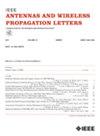一种基于归一化边缘基函数的二维有限元非共形自适应$h$精化方法
IF 3.7
2区 计算机科学
Q2 ENGINEERING, ELECTRICAL & ELECTRONIC
引用次数: 0
摘要
在有限元自适应技术中,网格细化方法生成的网格质量至关重要。在归一化边缘基函数的基础上,针对包含挂节点的网格界面边缘设计了新的基函数。这些基函数是在共享同一界面边缘的多个三角形元素上定义的。所建立的基函数能够保持数值场的切向分量在粗网格和细网格之间的界面上的连续性。本文所采用的基于所提出的基函数的不合格细化方法,在不引入额外的未知量的情况下,保持了网格质量,加快了自适应过程。将该方法与双加权残差法相结合,应用于时谐电磁问题的自适应处理,并与二分法进行了比较,验证了该方法的有效性和优越性。本文章由计算机程序翻译,如有差异,请以英文原文为准。
A Nonconformal Adaptive $h$-Refinement Method for 2-D Finite Element Analysis Based on Normalized Edge Basis Functions
In finite element adaptive techniques, the mesh quality generated by mesh refinement methods is of paramount importance. Based on normalized edge basis functions, we design new basis functions specifically for mesh interface edges containing hanging nodes. These basis functions are defined across the multiple triangular elements sharing the same interface edge. The developed basis functions are capable of preserving the continuity of the tangential components of the numerical fields across the interface between coarse and fine mesh regions. The nonconforming refinement method employed in this work, which is based on the proposed basis functions, can maintain the mesh quality and accelerate the adaptive process, without the need to introduce additional unknowns. By integrating the proposed technique with the dual-weighted residual method, we apply it to the adaptive process of time-harmonic electromagnetic problems, and make comparisons with the bisection method, in order to validate the effectiveness and superiority of the presented approach.
求助全文
通过发布文献求助,成功后即可免费获取论文全文。
去求助
来源期刊
CiteScore
8.00
自引率
9.50%
发文量
529
审稿时长
1.0 months
期刊介绍:
IEEE Antennas and Wireless Propagation Letters (AWP Letters) is devoted to the rapid electronic publication of short manuscripts in the technical areas of Antennas and Wireless Propagation. These are areas of competence for the IEEE Antennas and Propagation Society (AP-S). AWPL aims to be one of the "fastest" journals among IEEE publications. This means that for papers that are eventually accepted, it is intended that an author may expect his or her paper to appear in IEEE Xplore, on average, around two months after submission.

 求助内容:
求助内容: 应助结果提醒方式:
应助结果提醒方式:


